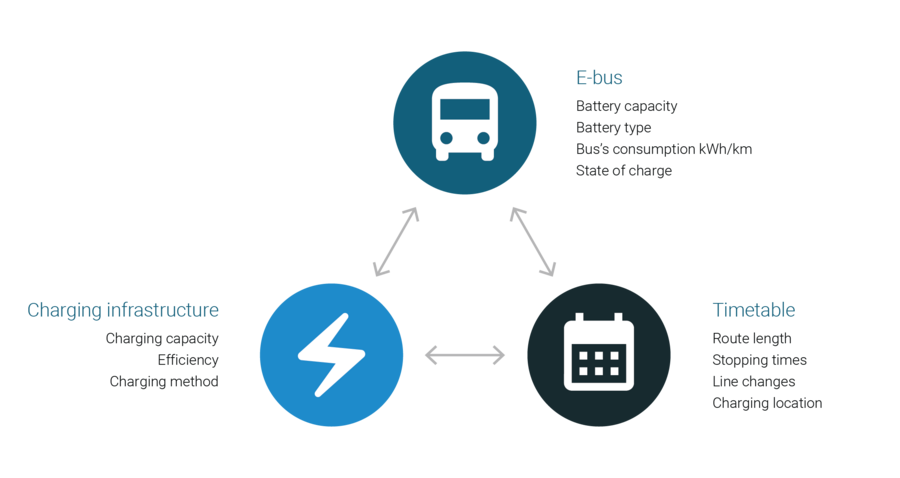Feasibility tool used for electric buses in transition to zero-emission bus transport
From 2030 all buses in the Netherlands need to be emission-free. Electric buses (e-buses) are widely being chosen as the means to achieve this goal. To help provinces, municipalities and transport operators in transitioning to zero-emission bus transport, Witteveen+Bos has developed a tool for measuring the feasibility of e-buses in urban public transport areas and at depots.
With the introduction of e-buses, a new value chain has been created – the ‘transport triangle’ – with charging infrastructure as the important new element. For e-buses to be successfully deployed, it is essential to have a good understanding of the interrelationships between the three points of this triangle: timetables, charging infrastructure and e-buses.
The coordination of these three elements and the connections between them is essential for effective electric bus transport. The most important variables relating to each element are shown in the figure below. Often the timetable is taken as the starting point.

Figure 1 New value chain (‘transport triangle’) with the factors e-bus, charging infrastructure and timetable.
To help determine the feasibility of e-bus deployment, Witteveen+Bos has developed a feasibility tool. This tool allows for diverse stakeholder requirements and provides the following insights:
- Amount and type of chargers required at each location
- Battery consumption and state of charge per bus per day
- Minimum grid connection required
- Number of charging cycles per day
- Grid use per day and opportunities for optimalisations
- Robustness of charging system
- Space required for charging infrastructure
Practical deployment of feasibility tool in Zwolle and the Gooi en Vechtstreek region
Witteveen+Bos deployed this tool in a feasibility study on electrifying city buses in Zwolle. It was hoped the e-buses could be charged at the city’s central station during their services. The results from the tool subsequently formed the design starting points for drafting a schedule of requirements, which outlined what was needed to realise the charging infrastructure at Zwolle’s central station as well as the space required.
The feasibility tool was also used to determine the circumstances under which it would be possible to electrify the entire bus fleet of the Gooi en Vechtstreek region. Various scenarios (charging locations) were considered and, for each location, the requirements in terms of number of charging units, amount of space, and grid connections
Share this page
Contact

Theo Ludlage

Bram Bouwens
